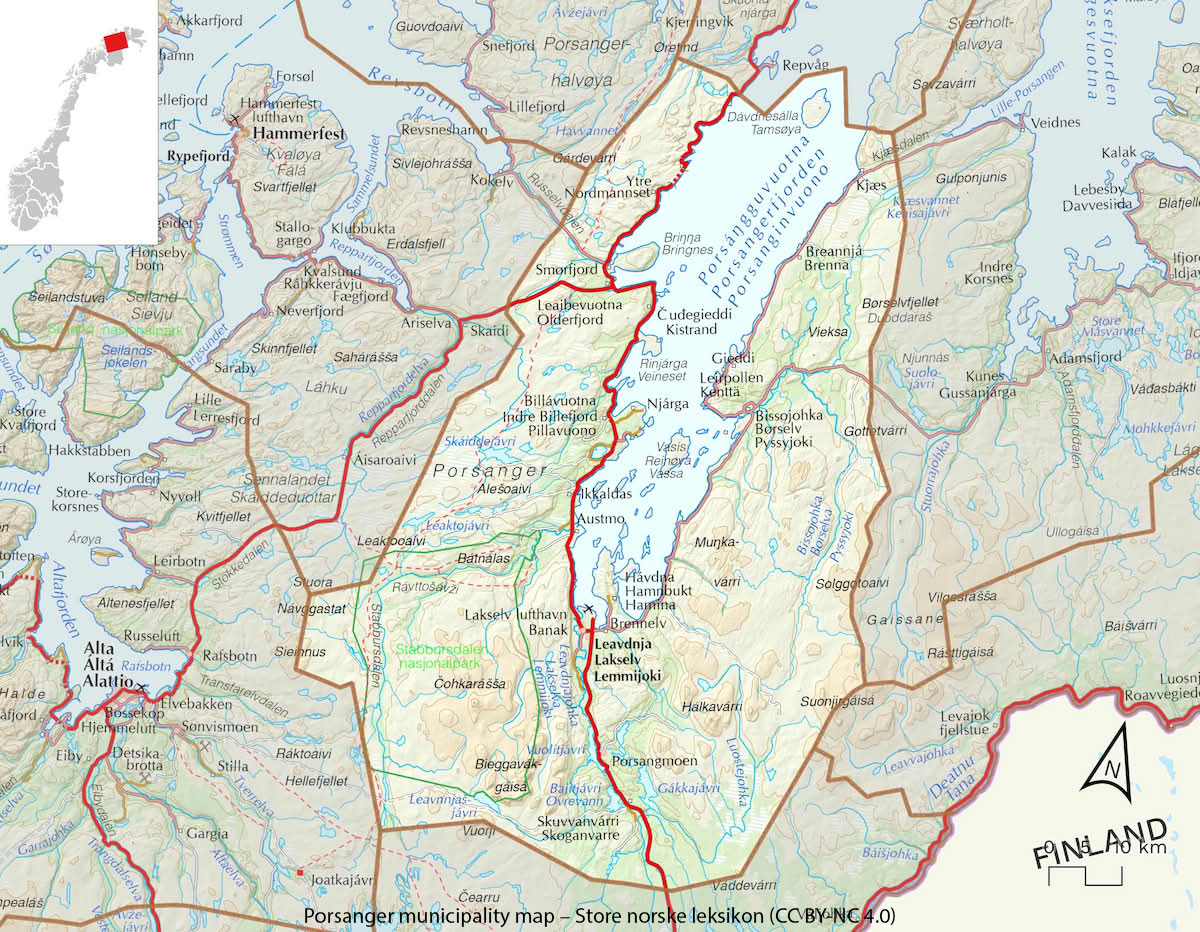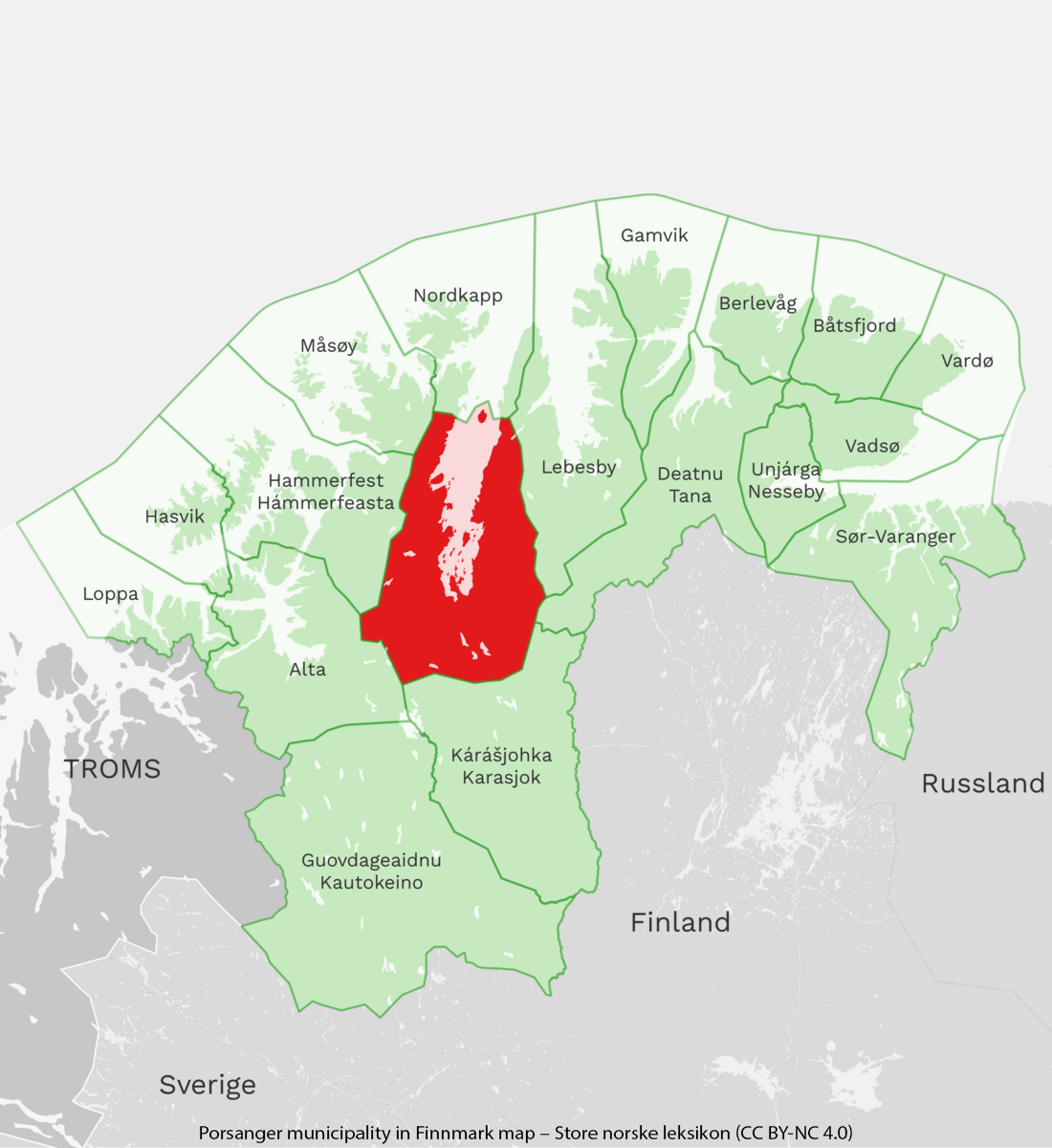PORSANGER / PORSÁŊGU / PORSANKI
-
PORSANGER / PORSÁŊGU / PORSANKI -
Porsanger, or Porsáŋgu in Northern Sámi and Porsanki in Kven, is one of Norway’s largest and most wide-open municipalities. It surrounds the 123 kilometer long Porsangerfjord, a landscape shaped by tundra valleys, arctic coastline and some of the clearest traces of post ice age land uplift in the country. Here lies Lakselv, the only town, while smaller communities such as Børselv, Kistrand and Olderfjord sit scattered along the fjord. This is one of very few places in Norway where Norwegian, Sámi and Kven are all official languages, a living reminder that the region has always been a crossroads of northern peoples, traditions and identities.
Nature defines life in Porsanger just as strongly as its culture. Three major salmon rivers flow through the municipality, with Børselva carving the turquoise Silfar canyon and Stabburselva running through the world’s northernmost pine forest in Stabbursdalen National Park. Hundreds of lakes filled with trout and char lie between plateaus and valleys, and the coastline forms what many call the world’s northernmost archipelago, rich with seabirds, shallow reefs and quiet inlets. Mountains known as gáissáer rise above it all, including Čohkarášša at 1139 meters, giving the landscape a raw and expansive character shaped by wind, winter light and the northern sky.
People have lived around Porsangerfjord for more than 10,000 years, from the earliest coastal settlements of the Stone Age to the Sámi reindeer herding communities that have moved through these valleys for centuries. Later came Kven settlers from Tornedalen who blended into the Sámi coastal culture, followed by Norwegian arrivals in the early 1900s. The Second World War left deep traces here when nearly the entire municipality was burned during the forced evacuation of Finnmark, but the region rebuilt itself with resilience and pride. Today Porsanger continues to carry its layered history with dignity, reflected in its coat of arms with three reindeer, a symbol of migration, endurance and the enduring bond between people and the northern landscape.




